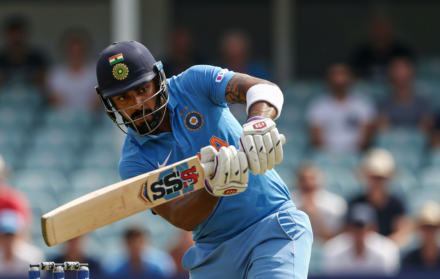
The Role of Cricket in Promoting Cultural Exchange
Cricket has long been more than just a sport; it is a unifying force that transcends borders, cultures, and communities. The role of cricket in promoting cultural exchange is evident in how the game has evolved into a global phenomenon, bringing together people from diverse backgrounds to share their passion for the sport. As the game continues to grow in popularity, its ability to foster inclusivity and diversity becomes even more critical.
One of the key aspects of cricket’s global appeal is its accessibility. Efforts to make cricket accessible to everyone have played a significant role in breaking down barriers and encouraging participation across various demographics. By creating opportunities for people from different socioeconomic backgrounds to engage with the sport, cricket has become a platform for cultural exchange and mutual understanding.
Inclusivity within the sport is also highlighted by the growing emphasis on diversity in cricket, particularly at the grassroots level. Programs that promote inclusivity and diversity in kids’ cricket are crucial in ensuring that the next generation of players and fans come from a wide range of cultural backgrounds. This early exposure to cricket fosters a sense of community and shared identity, reinforcing the sport’s role in promoting cultural exchange.
Women’s cricket, in particular, has seen a surge in participation and support, with an increasing focus on the inclusion of diverse cultures. As more women from different cultural backgrounds take up the sport, they bring their unique perspectives and experiences, enriching the global cricket community. This diversity within the sport not only strengthens the game but also enhances its ability to act as a bridge between cultures.
Cricket’s role in cultural exchange is not limited to the players on the field; it extends to the fans as well. The rise of cricket tours and travel packages for fans has created a vibrant culture of cricket tourism, where fans from different parts of the world come together to experience the sport in various cultural contexts. These interactions often lead to meaningful exchanges, fostering a deeper understanding and appreciation of different cultures.
One notable example of cricket’s ability to cross cultural boundaries is the growth of the sport in non-traditional cricketing nations. The success of initiatives like Sixes Dallas in growing cricket in the USA demonstrates how the sport can adapt and thrive in diverse environments. By introducing cricket to new audiences, the sport becomes a vehicle for cultural exchange, allowing different communities to connect through their shared love for the game.
Moreover, cricket has long been recognized as an effective tool for team building and fostering camaraderie. The team-building aspect of cricket encourages cooperation and communication among players from different cultural backgrounds, further promoting cultural exchange and mutual respect.
The significance of cricket in promoting cultural exchange is also evident in the iconic stadiums that have become symbols of the sport’s rich history. These iconic cricket stadiums are not just venues for matches; they are cultural landmarks where fans from all over the world gather to celebrate their shared passion. The history and evolution of cricket as a sport that unites people from different cultures is a testament to its enduring power as a force for good.
The role of cricket in promoting cultural exchange is multifaceted, encompassing everything from grassroots initiatives to global fan engagement. As the sport continues to evolve, its ability to bring people together and foster understanding across cultures will remain one of its most significant contributions to the world.
Cricket as a Global Unifier: Bringing Cultures Together

Cricket has long been more than just a sport; it has served as a powerful tool for cultural exchange and unity across the globe. From its roots in England to its widespread popularity in countries like India, Australia, the Caribbean, and beyond, cricket has transcended national boundaries, bringing people of diverse cultures together. The global appeal of cricket lies in its ability to foster connections among players, fans, and nations, creating a shared passion that transcends cultural and linguistic differences.
One of the most significant ways cricket promotes cultural exchange is through international tournaments such as the ICC Cricket World Cup and the ICC T20 World Cup. These events bring together teams from various countries, each representing its own unique culture, traditions, and playing style. Fans from different backgrounds gather in stadiums and in front of screens worldwide, united by their love for the game. The atmosphere at these tournaments is electric, with colorful displays of national pride, cultural performances, and fan interactions that highlight the diversity within the cricketing community.
The historical context of cricket also plays a role in its ability to promote cultural exchange. The sport was spread across the British Empire during the colonial period, and while it was initially a symbol of British dominance, it has since been embraced by former colonies and adapted to local cultures. In countries like India, Pakistan, and the West Indies, cricket has become deeply embedded in the social fabric, contributing to national identity and pride. This shared history of cricket across different cultures creates a unique bond, allowing nations to engage in friendly competition while celebrating their shared heritage.
Moreover, cricket tours and bilateral series between countries further facilitate cultural exchange. When teams travel to foreign nations for a series, they are exposed to different cultures, traditions, and lifestyles. This exposure goes beyond the players, as fans traveling to support their teams also engage in cultural exchange, exploring new cities, tasting local cuisines, and interacting with locals. These experiences foster mutual understanding and respect among nations, helping to break down cultural barriers and promote global harmony.
Cricket serves as a global unifier, bringing together diverse cultures through shared passion and competition. The sport’s rich history, international tournaments, and cultural exchanges through tours and series have all contributed to its role in promoting cultural exchange. As cricket continues to grow in popularity worldwide, its ability to unite people from different backgrounds will only strengthen, further enhancing its role as a catalyst for global understanding and unity.
Cricket Diplomacy: Bridging Gaps Between Nations
Cricket has often played a significant role in diplomacy, helping to bridge gaps between nations and foster peaceful relations. Known as “cricket diplomacy,” the sport has been used as a tool to ease tensions, build alliances, and promote dialogue between countries with strained relations. The unique ability of cricket to bring people together, even in the face of political differences, underscores its importance in international relations.
One of the most notable examples of cricket diplomacy is the historic cricketing rivalry between India and Pakistan. Despite the political tensions and conflicts between the two nations, cricket matches between India and Pakistan have served as a platform for cultural exchange and diplomatic engagement. These matches, often referred to as “cricketing wars,” attract millions of viewers and generate intense emotions on both sides. However, they also provide an opportunity for dialogue and interaction, both at the governmental level and among the general public. The goodwill generated by these encounters has, at times, contributed to easing tensions and opening channels of communication between the two countries.
Cricket diplomacy is not limited to India and Pakistan. In the 1990s, the South African cricket team’s return to international competition after years of apartheid was a significant moment in global sports diplomacy. Nelson Mandela recognized the power of cricket in uniting a divided nation and promoting reconciliation. The 1992 Cricket World Cup marked South Africa’s return to the international stage, symbolizing the country’s reintegration into the global community. This event highlighted how cricket can be a force for positive change, promoting inclusivity and healing in post-conflict societies.
Another example of cricket diplomacy is the relationship between Australia and the West Indies. In the 1970s and 1980s, the West Indies cricket team dominated the international scene, and their matches against Australia became legendary. These encounters were not just about sport; they were also about cultural exchange and mutual respect. The West Indies’ success challenged racial stereotypes and inspired a new generation of cricketers worldwide. The camaraderie and sportsmanship displayed during these matches helped to foster better relations between the two regions, breaking down racial and cultural barriers.
Cricket diplomacy also extends to bilateral tours and friendly matches organized to celebrate diplomatic ties between nations. For example, the England-Pakistan Test series, known as the “Spirit of Cricket” series, was initiated to celebrate the long-standing relationship between the two countries. These series are often accompanied by cultural events, exchanges, and goodwill gestures that strengthen diplomatic ties and promote mutual understanding.
In summary, cricket diplomacy plays a crucial role in bridging gaps between nations and promoting peaceful relations. The sport’s ability to bring people together, even in times of political tension, makes it a valuable tool for fostering dialogue and building alliances. Through historic rivalries, post-conflict reconciliation, and bilateral series, cricket has proven to be a powerful force for diplomacy, promoting cultural exchange and understanding on a global scale.
The Influence of Cricket on Multiculturalism and Integration

Cricket has had a profound influence on multiculturalism and integration, particularly in countries with diverse populations. As a sport that is beloved by people from various cultural backgrounds, cricket has served as a bridge between different communities, fostering a sense of belonging and unity. The role of cricket in promoting multiculturalism is evident in how it has brought together people from different ethnicities, religions, and nationalities, creating a shared space where cultural differences are celebrated and respected.
In countries like the United Kingdom, Australia, and Canada, cricket has played a significant role in the integration of immigrant communities. For many immigrants, cricket serves as a familiar and comforting link to their home countries, helping them to connect with their cultural heritage while also integrating into their new society. Local cricket clubs often become hubs of multicultural activity, where people from different backgrounds come together to play, watch, and discuss the game. These clubs provide a sense of community and belonging, helping immigrants to feel more connected to their new environment.
The multicultural nature of cricket is also reflected in the diverse composition of national teams. Countries like England and Australia have fielded teams with players of various ethnicities and cultural backgrounds, highlighting the inclusive nature of the sport. These players often serve as role models for young people from immigrant communities, inspiring them to pursue their dreams and feel proud of their cultural heritage. The success of multicultural teams on the international stage sends a powerful message about the strength of diversity and the importance of inclusivity in sports.
Cricket’s influence on multiculturalism is also evident in the fan culture that surrounds the sport. In cities with large immigrant populations, cricket matches often become vibrant displays of cultural diversity, with fans wearing traditional clothing, waving flags, and singing songs from their home countries. These matches provide an opportunity for people to celebrate their cultural identity while also engaging with the broader community. The shared passion for cricket creates a sense of unity and mutual respect, breaking down cultural barriers and fostering social cohesion.
Moreover, cricket has played a role in promoting multiculturalism at the grassroots level. Schools and community programs that introduce cricket to children from diverse backgrounds help to foster a sense of inclusivity and teamwork. These programs not only teach the skills of the game but also emphasize the importance of respect, tolerance, and understanding. By bringing together children from different cultural backgrounds, cricket helps to build bridges between communities and promote social integration from a young age.
Cricket has had a significant influence on multiculturalism and integration, serving as a bridge between different communities and promoting social cohesion. Through its inclusive nature, diverse teams, and multicultural fan culture, cricket has helped to create a shared space where cultural differences are celebrated and respected. As the sport continues to grow in popularity worldwide, its role in promoting multiculturalism and integration will only become more important, making it a valuable tool for fostering unity in diverse societies.
Cricket Tours and Cultural Exchange: Learning Beyond the Pitch
Cricket tours have long been an essential part of the sport, providing opportunities for players and fans to experience new cultures and environments. These tours go beyond the matches played on the field; they are also about cultural exchange, education, and mutual understanding. When teams travel to different countries for a series, they are not just representing their nation in sport—they are also ambassadors of their culture. Cricket tours offer a unique opportunity to learn and grow, both for the players and the communities they visit.
One of the most significant aspects of cricket tours is the cultural exchange that takes place between players. When cricketers travel to a foreign country, they are exposed to new customs, traditions, and ways of life. This exposure broadens their perspectives and helps them to appreciate the diversity of the world. Players often engage in cultural activities, visit historical sites, and interact with local communities, gaining a deeper understanding of the culture they are visiting. These experiences are not only enriching for the players but also foster mutual respect and understanding between nations.
Cricket tours also provide opportunities for fans to engage in cultural exchange. Traveling supporters often accompany their teams on tours, creating a vibrant atmosphere in the host country. These fans bring their own traditions, songs, and celebrations, adding to the cultural diversity of the event. The interaction between local fans and traveling supporters creates a unique blend of cultures, with each group sharing their customs and experiences. This exchange goes beyond the stadium, as fans explore the local culture, cuisine, and landmarks, contributing to a deeper cultural appreciation and understanding.
In addition to cultural exchange, cricket tours have an educational component that benefits both the visiting team and the host community. Teams often engage in outreach programs, visiting schools, hospitals, and community centers to interact with local children and promote the sport. These activities help to inspire the next generation of cricketers and foster a love for the game in new regions. The educational aspect of cricket tours extends to the players themselves, who learn about the challenges and opportunities faced by communities in different parts of the world.
The historical significance of cricket tours also plays a role in promoting cultural exchange. For instance, the West Indies’ tours to England in the 1950s and 1960s were not just about cricket; they were also about challenging racial stereotypes and promoting social change. The success of the West Indian team on these tours helped to break down racial barriers and inspired a generation of black cricketers around the world. These tours highlighted the power of cricket to bring about social change and promote cultural understanding.
Cricket tours are more than just a series of matches—they are opportunities for cultural exchange, education, and mutual understanding. Through the interaction between players, fans, and communities, cricket tours promote cultural appreciation and foster a sense of global unity. As the sport continues to grow and expand into new regions, the role of cricket tours in promoting cultural exchange will remain a vital aspect of the game, enriching the lives of all those involved.
Cricket’s Role in Building Global Communities

Cricket has played a pivotal role in building global communities, bringing people from diverse backgrounds together through a shared love for the sport. As one of the most popular sports in the world, cricket has a unique ability to unite individuals and communities across continents, fostering a sense of global camaraderie and solidarity. The role of cricket in building global communities is evident in the way the sport has transcended national boundaries, creating a global network of fans, players, and organizations that are connected by their passion for the game.
One of the most powerful ways cricket builds global communities is through its international tournaments, such as the ICC Cricket World Cup, ICC T20 World Cup, and ICC Champions Trophy. These events bring together teams from all over the world, each representing their country on the global stage. The tournaments are not just about competition; they are also about celebration, as fans from different cultures come together to support their teams and enjoy the spectacle of cricket. The shared experience of watching and celebrating the game fosters a sense of global unity, with fans recognizing that, despite their differences, they are all part of a larger cricketing community.
Cricket also builds global communities through grassroots initiatives and development programs that promote the sport in emerging cricketing nations. Organizations like the International Cricket Council (ICC) and various national cricket boards work to introduce cricket to new regions, providing resources, coaching, and infrastructure to help the sport take root. These initiatives create opportunities for young people in developing countries to engage with cricket, fostering a sense of belonging to the global cricketing community. As more countries embrace the sport, cricket continues to expand its reach, bringing new communities into the fold and strengthening the bonds between nations.
The rise of digital media and social platforms has further enhanced cricket’s role in building global communities. Fans from around the world can now connect with each other in real-time, sharing their thoughts, opinions, and experiences related to the game. Social media platforms like Twitter, Facebook, and Instagram have become virtual stadiums where fans from different countries and cultures can come together to celebrate cricket. Online communities, fan clubs, and forums have also emerged, providing spaces for fans to engage with each other, discuss matches, and share their passion for the sport. These digital platforms have made it easier than ever for cricket to build a global community that transcends physical borders.
In addition to fostering global connections among fans, cricket has also played a role in building communities around social causes. Many cricket teams, players, and organizations use their platform to promote important social issues, such as gender equality, education, and health. Initiatives like Cricket for Good, the ICC’s global community outreach program, leverage the power of cricket to make a positive impact on society. By bringing attention to these causes and mobilizing support from the global cricketing community, the sport plays a vital role in driving social change and building a more inclusive and compassionate world.
In conclusion, cricket’s role in building global communities is multifaceted, encompassing international tournaments, grassroots development, digital engagement, and social impact initiatives. Through its ability to unite people from different backgrounds and cultures, cricket fosters a sense of global camaraderie and solidarity that transcends national boundaries. As the sport continues to grow and evolve, its role in building global communities will remain a cornerst





